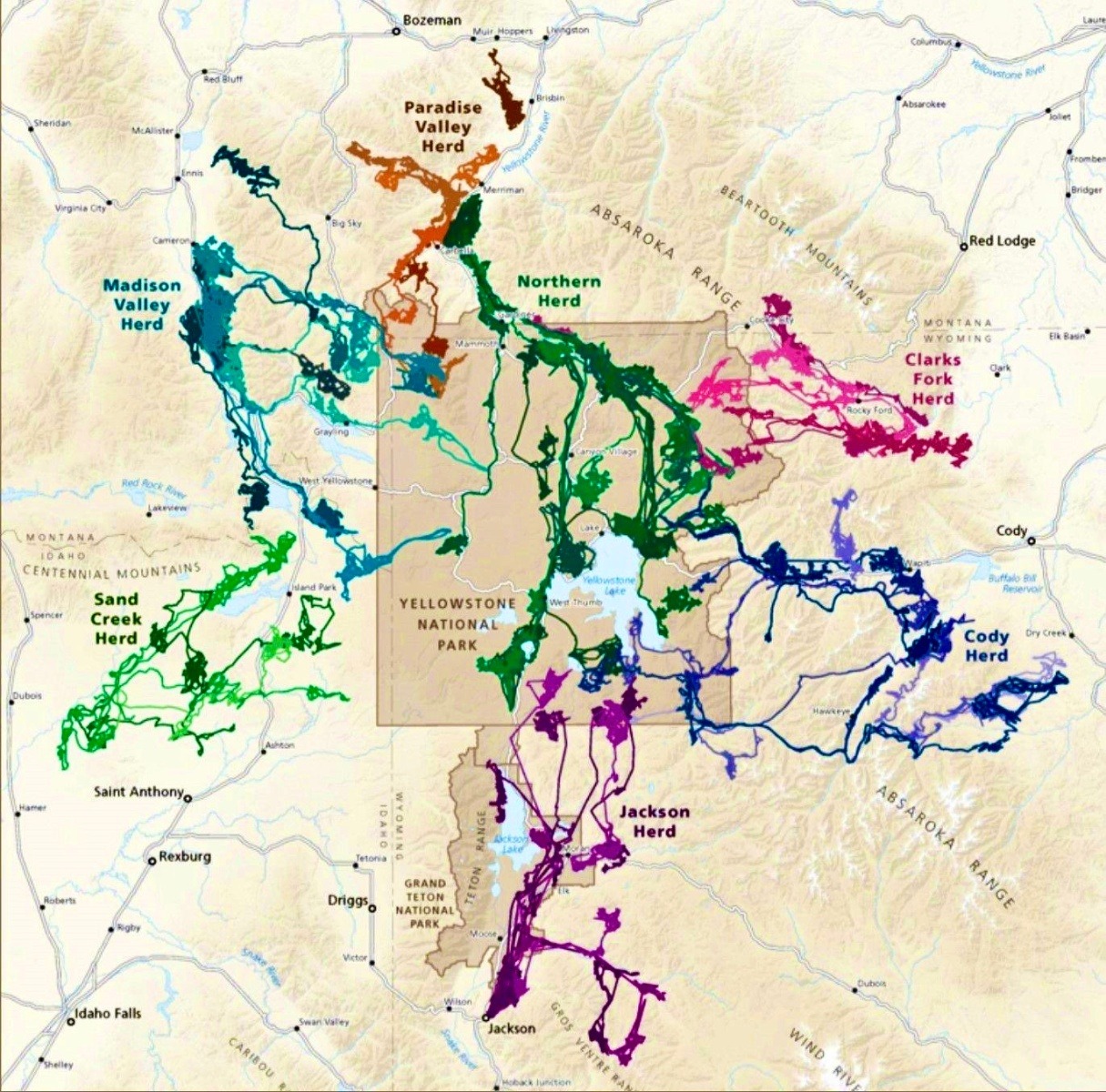This map showing the remarkable long-distance migrations of a dozen different elk herds in Greater Yellowstone speaks to one of the main reasons why this ecosystem is unparalleled in the Lower 48 and iconic in the world. The corridors for elk, mule deer and pronghorn only still exist here because they remain unfragmented by human development or inundated by large numbers of people using the landscape. Can they persevere given development trends and outdoor recreation reaching industrial-strength levels? Photo courtesy Wyoming Migration Initiative

